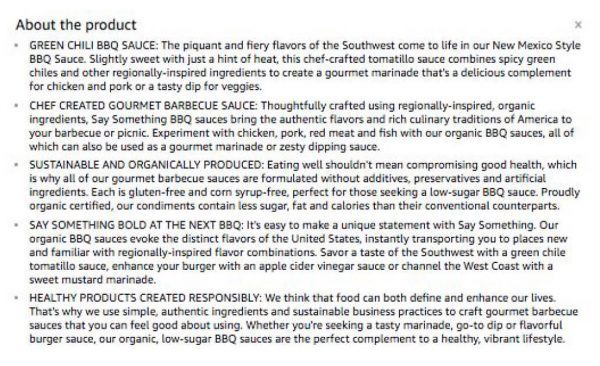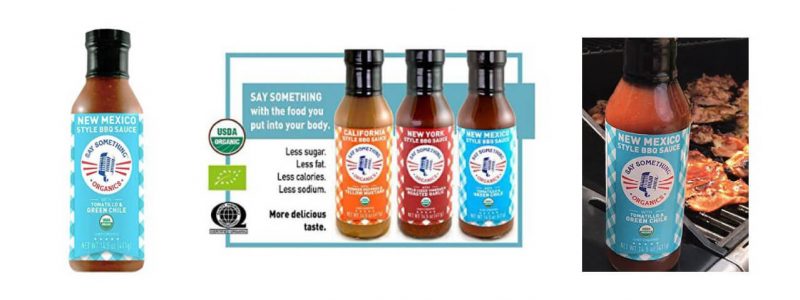You’ve taken on an initial Amazon SEO audit to determine areas of strength and areas for improvement, conducted all-important keyword research to hone in on your brand’s most relevant keywords and read up on Amazon SEO optimization basics. Having completed these steps, it’s now time to move onto the nitty-gritty: Amazon listing optimization!
Why optimize your Amazon product page listing?
In Amazon’s increasingly competitive retail environment, it’s not enough to simply create a product page listing and hope for the best. Further, repurposing content from an e-commerce web page is not necessarily an effective Amazon SEO strategy; yes, much like Google Amazon’s smart and ever-evolving algorithm, A9, favors copy that is keyword-rich, but unlike Google and other search engines, A9 places first priority on content that converts to sales.
As such, marketers must approach the task of Amazon SEO copywriting in a nuanced way, bearing in mind the following statistics (via CPC Strategy):
- 70% of Amazon customers never click past the first page of search results
- 35% of Amazon shoppers click on the first product featured on a search page
- The first three items displayed in search results account for 64% of clicks
- 81% of clicks are on the first page of search results
Bottom line: Strong search rankings tangibly and unequivocally translate into more sales.
How to conduct Amazon page listing optimization
For the unanointed, conducting Amazon page listing optimization can be both a daunting and time-consuming task. That is why working off of a solid template can make it much easier. Luckily for you, we’ve compiled the five key features every Amazon product page listing needs in order to be optimized for Amazon SEO.
The goal? More shoppers finding your product and — you guessed it — more sales!
The five key elements of a successful Amazon product page listing, in order of importance
#1 – TITLE
#2 – FIVE BULLET POINTS
#3 – DESCRIPTION
#4 – BACKEND KEYWORDS / SELLER TERMS
#5 – PRODUCT IMAGES
Title
What it is…
It is what you think it is — the title of a given product page listing. It’s the first thing that both shoppers and Amazon A10 reference in the search process; if you’re a Google SEO whiz, consider it akin to a web page’s Title Tag . Further, if you’re running Amazon advertising, a product page listing title will populate as ad copy.
What it does…
It might be small, but an Amazon product page listing title is oh-so-mighty. In fact, it is the most important copy element in the world of Amazon SEO, helping A10 classify, prioritize and organize your product page listing according to relevant search results. In this sense, it offers valuable real estate to integrate your primary keyword.
What to remember…
A successful product title includes your primary keyword. That intact, other important and relevant details to consider incorporating include product name, brand name and variants like color and size. Per Amazon, product page listings are truncated after 50 characters on mobile, so adhering to that character count is optimal; Amazon also recommends following category-specific guidelines which allow for more character count bandwidth according to category.

Other points to consider:
- Ensure title is case-capitalized
- Ensure it is easily scannable and digestible; break up keywords with punctuation like dashes (-) and vertical bars (|)
- Do not use all CAPS
- Do not capitalize conjunctions (and, or, for) and articles (the, a, an)
- Do not use symbols like ~ ! * $ ?
- Use numerals (1 instead of one)
- Do not include subjective terms (i.e. – “PERFECT”)
FIVE BULLET POINTS
What they are…
The second most important content element in the world of Amazon SEO, consider the five bullet points as an “elevator pitch” of a given product and, to a lesser extent, the brand itself. Many sellers approach this section as an afterthought, which is a big mistake, given the premium Amazon places on this content. Similar to the title, bulleted copy has advertising implications. Theses keywords help Amazon understand what “auto” advertising keywords your listing is relevant for.
What they do…
These nuggets of information are designed to illuminate important features and differentiators of a given product while showcasing your most relevant keywords. Formatted as bulleted, bite-sized bits of information, they cater to Amazon shopper behavior, providing information-rich content that is easily scannable and inherently “shoppable.”
What to remember…
This is valuable real estate — stay organized! Bullets should be ordered according to importance, with your most compelling and relevant points highlighted first. The same thinking applies when integrating keywords; include your most important keywords in the first several bullets, working your way down accordingly.

Other points to consider:
- Lead each bulleted piece of content with an attention-grabbing phrase in all CAPS; doing so not only catches the distracted shopper’s attention, it helps organize your benefits in a logical way.
- A sweet spot for each bullet is roughly 250-350 characters .
- Be specific as possible; these are action-oriented copy pieces, compelling the shopper to buy.
- Avoiding repeating the same points across bullets.
- Do not include special promotional information or pricing.
PRODUCT DESCRIPTION
What it is…
A longer-format, narrative-driven description of the product and brand. Usually upwards of 2,000 characters and several paragraphs long, this section lives further down the Amazon product page listing.
What it does…
Because of the sheer real estate it provides — 2,000 characters — the product description offers ample opportunities to engage in more traditional brand storytelling on the Amazon platform. Furthermore, it provides plenty of space to weave in all keywords pertinent to your product, including some of the long-tail terms that may not have been prominently featured in the aforementioned sections.
What to remember…
Shoppers scan this section to gain further context about the product and, more importantly, about the brand itself. The content should be keyword-rich, but be less didactic and action-oriented than the five bullets.
Other points to consider:
- Have an incredible brand or compelling founder story? Tell it here!
- Are there any pressing questions you think bear addressing with your product? Descriptions are convenient places to include FAQs.
- Are you lacking reviews? If so, bulking up the product description is a good idea, as it provides the shopper with some further context that he or she may otherwise have gleaned by reading a review.
BACKEND KEYWORDS / SELLER TERMS
What it is…
It’s the metadata on Amazon. A “hidden” feature of an Amazon product page listing, the backend keywords / seller terms section helps Amazon optimize your page for discoverability. Current guidelines allow for 249 characters (including spaces, hyphens, commas, etc), so being selective and smart about what keywords you’re targeting is critical.
What it does…
Think of the backend keywords / seller terms as a “cheat sheet” for Amazon listing optimization; it helps Amazon optimize for the keywords you want to be indexing against. (How great is that!?) As such, it’s important to take full of advantage of this section.
What to remember…
Just like other Amazon copy elements, order matters for keywords in this section. List them out according to ranking and relevance, separating each by comma — no other symbols necessary.
Other points to consider:
- Aside from including short-tail keywords, integrate longer tail keywords that didn’t bubble up to your front-end content.
- Be creative! Try different spelling and order variations of keywords in order to capture all relevant search volume.
- Proofread and be thoughtful. Now is not the time for spelling errors, subjective adjectives (i.e. – “pretty”) or profanity.
PRODUCT IMAGES
What they are…
Your product image(s)! While a product page listing can encompass up to nine images, the primary photo — which also happens to be the one that appears in search results (and ads)— is the most important. Consider it your face to the Amazon world… and you always want to put your best face forward!
What they do…
On Amazon, images are a critical part of the consumer journey, helping elucidate what your product looks like and what it does. In this sense, informative, clear and professional images can work wonders to build consumer trust in your product, especially for first-time buyers.
What to remember…
High-definition, professional images are a must, especially for a primary photo. (If you do nothing else, ensure that you have one professionally-taken image of your product to feature.) Further, primary photo and secondary photos — often referred to as “detail images” — should appear on a clean, white background. No distractions or clutter.

Other points to consider:
- Reference Amazon’s guidelines to appropriately format photos; this includes guidance on backend naming convention.
- Photos only! Do not use illustrations or drawings to showcase a product.
- Per Amazon’s guidelines, your product should occupy 85% of the photo frame.
- Use high-resolution photos that support Amazon’s zoom feature.
- Consider adding various perspective of your product, particularly for categories like home furnishings and apparel / accessories.
- Integrating lifestyle / case-use photos are helpful ways to illuminate the ways to use your product. Unlike primary and detail images, photos do not need to be shot on a white background.
- Infographics are a great way to highlight the various benefits and features of your product (e.g., ingredients, fabrics, technical specs)
- The more, the better! Take advantage of all nine images, if possible.


